Your family’s grocery cart surely has some good quality fruits and vegetables in it. To ensure the right choices, it inevitably takes some time to sort and assess them. What would you say to a few tricks to make it easier for you?
At Arctic Gardens, we love vegetables in all shapes, so we thought we’d help you pick your vegetables at the grocery story to help you save time and truly appreciate them.
First, here are a few basic principles on vegetable freshness:
1. Pick products that are in season
Fresh vegetables arrive on our shelves at different times of the year according to harvesting dates. To appreciate them at their best, consume them soon after they’ve been picked in order to get the tastiest. Don’t be shy to get advice from supermarket staff in the fruit and vegetables section to learn which products are in season at that time!
2. Support your local growers
Choose what’s growing in your area. Proximity to harvest sites allows vegetables to find their way more quickly to your plate and, therefore, preserves the most freshness and vitamins. As well, by doing so, you’re supporting your local economy and are making an environmental statement since vegetables sold locally reduce greenhouse gas (GHG) emissions related to transport.
3. Take note of the vegetable’s grade
Every product is classified into a grade that indicates its level of quality. Superior quality products are graded A, 1 or Fancy. After several days in the fresh food aisle, vegetables lose their quality. They are then retrograded and you’ll see them identified with the number 2 or 3, with the letter B or C or Choice or Standard. The grade varies and regresses according to vegetable aging and appearance which lower in quality with time.
4. Frozen foods to the rescue!
Frozen vegetables are often fresher than fresh vegetables themselves. Packaged in only a few hours after harvest, they preserve all of their taste and nutritional value that you’re looking for. In contrast, in winter, fresh vegetables have between 10 and 12 days of life once they arrive at the supermarket due to the long transport time. So if the desired vegetable isn’t in season at the time of purchase or if they come from far away (for example, beans from Senegal or Morocco), opt for frozen vegetables.
This alternative is available all year round and frozen vegetables are almost always produced by growers from here.
Now let’s see how to choose the most popular vegetables at the supermarket.
Tomatoes: Firm, not hard
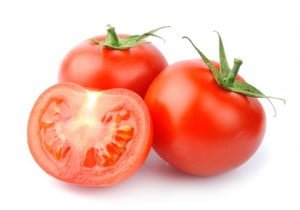 Choose tomatoes that are smooth and quite firm, but not too hard. Make sure that there aren’t any yellow spots on the shoulder, meaning on the top near the peduncle.
Choose tomatoes that are smooth and quite firm, but not too hard. Make sure that there aren’t any yellow spots on the shoulder, meaning on the top near the peduncle.
Don’t make the mistake of buying them when they’re orangey green and putting them in the fridge because they’ll never ripen and just go to waste!
Watch out for very red tomatoes that look nice and juicy at first glance, but that are soft and less fresh.
Bell peppers: Which colour?
 Whether they’re green, yellow, red or orange, bell peppers must be firm, smooth, shiny and have no spots. Choose the heaviest ones. They have more flesh.
Whether they’re green, yellow, red or orange, bell peppers must be firm, smooth, shiny and have no spots. Choose the heaviest ones. They have more flesh.
Don’t know which colour to choose? Green and yellow peppers are red peppers that were picked before their skin could totally change colour. Yellow ones have a taste between the green’s bitterness and the red’s sweetness. For their part, orange peppers are another variety, more rare, so they have a more delicate taste that we keep going back for!
The orange and red are the two varieties that have the most vitamin C because they have reached maturity.
Onions: Firm without germs
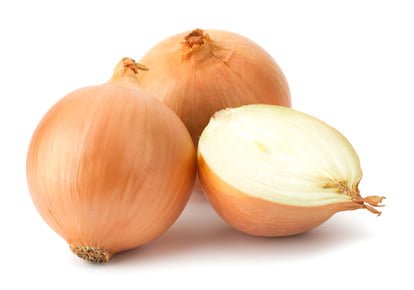
Even though they’re sold in bags, onions also deserve to be chosen with care.
Choose onions that are firm, not soft, and that have already sprouted at the ends. Look also for shiny skins with no marks.
Cucumbers: Smooth skin, rigid ends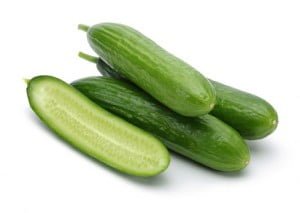
Smooth, firm skin with a nice uniform dark green colour, these are the secrets of a really fresh cucumber! A pale green skin means that it’s getting old.
Then check to make sure that the ends are very hard. This is how you know it’s fresh.
Mushrooms: No spots nor suspicious smells
 It’s hard to judge mushrooms in-store because their quality is hidden by plastic wrap and the container they’re packaged in.
It’s hard to judge mushrooms in-store because their quality is hidden by plastic wrap and the container they’re packaged in.
You can still check to make sure they’re not covered with brown spots or stickiness, that their colour is uniform and they don’t smell.
If by chance, you can test them, check that their caps are firmly attached to the stems and that’s how you’ll know they’re still fresh.
Lettuce: Heaviness = freshness?
 There are all kinds of lettuce. How do we choose?
There are all kinds of lettuce. How do we choose?
For sandwiches, choose a head lettuce like iceberg or Boston for its crunch and if you’re making a hot sandwich (like a panini, for example), choose it because this variety is very resistant to heat. For a dish salad to accompany a meal, go for frisée if you prefer a more pronounced taste. For Caesar salad, consider romaine for its crunchiness and lightly acidic taste which goes well with croutons, bacon and cheese.
Regardless of the kind of lettuce you choose, make sure it’s heavy and dense. This will tell you whether it’s retained water or is more dried out. A white base that’s not dehydrated confirms its freshness.
Don’t be discouraged if a few of the outer leaves aren’t very attractive because they actually protect the lettuce in the fields. But if there are too many leaves that are yellowed or damaged, that’s a sign that it’s not as fresh!
Broccoli: Tight head, hydrated base
 Broccoli is misleading because they often look really good. So what do we look for in that case?
Broccoli is misleading because they often look really good. So what do we look for in that case?
First of all, the broccoli head’s flower buds must be as close together as possible and the head should be a uniform green, even a little purplish, but never yellow.
Second, look at the base because if it’s dry, that’s a sign that the broccoli was picked too long ago, so pick one that still has a fresh stem instead!
Discover all of our broccoli recipes.
Celery: Toned stalks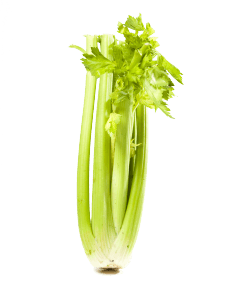
Firm celery is crunchy celery. You can break off the end of a stalk or look to see if the base is still hydrated.
The colour of the stalk and leaves should be a beautiful, delicate green. The darker the green, the stronger and more bitter the taste. Leave the ones with spots or damaged pieces.
Asparagus: Smooth stalk, tightly-closed scales
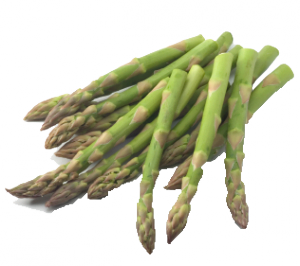 To be at the peak of their freshness, asparagus must have very firm stalks, almost brittle! The tips must also have tightly-closed scales and the stalk must be smooth.
To be at the peak of their freshness, asparagus must have very firm stalks, almost brittle! The tips must also have tightly-closed scales and the stalk must be smooth.
If you choose green asparagus, make sure that they’re green at least 3/4 way along the length! Don’t worry if you see little hints of mauve on the green asparagus tips. That’s because they lacked a little light in the field!
In terms of size, know that the bigger an asparagus is, the more fibrous it will be. That’s why people often prefer the smaller ones.
Cauliflower: Watch out for brown spots

Like broccoli, the cauliflower’s florets must be close together and in this case, be a nice, creamy white. Brown or black spots are synonymous with drying out.
You should also make sure that the leaves are green and hard and that its cut base isn’t dried out.
Beans: Firm and vibrant colour
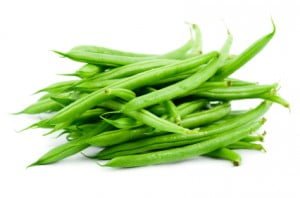 Green, yellow, fleshy or extra fine… beans come in many varieties, each with its own characteristics. Choosing the one that seduces you is entirely in your hands! But make sure they’re not too pale, that they don’t have any obvious seeds (meaning bumps), that the ends are still hard. Also avoid ones that have brown spots.
Green, yellow, fleshy or extra fine… beans come in many varieties, each with its own characteristics. Choosing the one that seduces you is entirely in your hands! But make sure they’re not too pale, that they don’t have any obvious seeds (meaning bumps), that the ends are still hard. Also avoid ones that have brown spots.
Discover all of our bean recipes.
 Cabbage: Find the heaviest
Cabbage: Find the heaviest
Weigh a few cabbages before choosing the right one. The heaviest cabbages are the densest which means that they’re also the freshest and the tastiest!
Like lettuce and cauliflower, the cabbage base must be well hydrated.
Zucchini: Rigid with a smooth skin

Even if it’s perfectly normal to find irregular shades of green on the zucchini skin, watch out for the brownish spots.
Make sure that the skin is smooth and that you can’t press your fingers into it.
Leeks: Good, no matter what size
 Don’t fall for just buying the biggest leeks. Depending on the season, in reality, leeks aren’t always the same size, so don’t judge them on that!
Don’t fall for just buying the biggest leeks. Depending on the season, in reality, leeks aren’t always the same size, so don’t judge them on that!
Focus on the leaves that must be very straight with a vibrant colour. Choose leeks that don’t have cracked bases.
Another trick: when fresh, leeks are white on at least 1/4 of its length!
And what about frozen vegetables? How do I choose?
 It’s equally important to choose frozen vegetables with care! Some products in the frozen food section, like peas and corn, are very popular because they’re more colourful and look fresher than their canned counterparts. It’s often impossible to get fresh peas or corn kernels! To properly choose a frozen product, you must first choose your favourite variety by asking yourself which vegetable or vegetable blend would be the most appropriate for your desired meal! Discover our products and delicious recipe ideas to use them in your cooking!
It’s equally important to choose frozen vegetables with care! Some products in the frozen food section, like peas and corn, are very popular because they’re more colourful and look fresher than their canned counterparts. It’s often impossible to get fresh peas or corn kernels! To properly choose a frozen product, you must first choose your favourite variety by asking yourself which vegetable or vegetable blend would be the most appropriate for your desired meal! Discover our products and delicious recipe ideas to use them in your cooking!
You must then make sure that the bag of frozen vegetables has been well maintained during transport from the plant to the supermarket. To do so, feel the bag to check that the vegetables aren’t clumped together. A huge piece of ice in the bag means that thawing followed by refreezing occurred and so, a loss of flavour. Some supermarkets overload their freezers without doors thereby causing some products to thaw because they’re at room temperature. So keep an eye out and make sure that the vegetables move around freely in the bag you choose.
Finally, to benefit from maximum freshness and taste, consume frozen vegetables in the month following purchase. With time, vegetables can lose their freshness in the home freezer as the temperature fluctuates more than in commercial or industrial installations.
Finally, to take advantage of maximum freshness and taste, consume frozen vegetables in the month following product purchase. With time, vegetables can lose their freshness in a home freezer as the temperature fluctuates more than in commercial or industrial installations.
In conclusion, you now know our tricks and tips to properly identify really fresh vegetables from those that don’t deserve a place in your grocery cart. The keys: look for colour, texture and firmness, hydration, as well as weight for some.
Even though we’ve wisely identified methods for properly choosing vegetables, you can always rely on your own judgement or ask staff in the fruit and vegetable aisles if you’re not sure. There are also surely another dozen other tips that we’d love to know about by the way, so don’t hesitate to share yours!


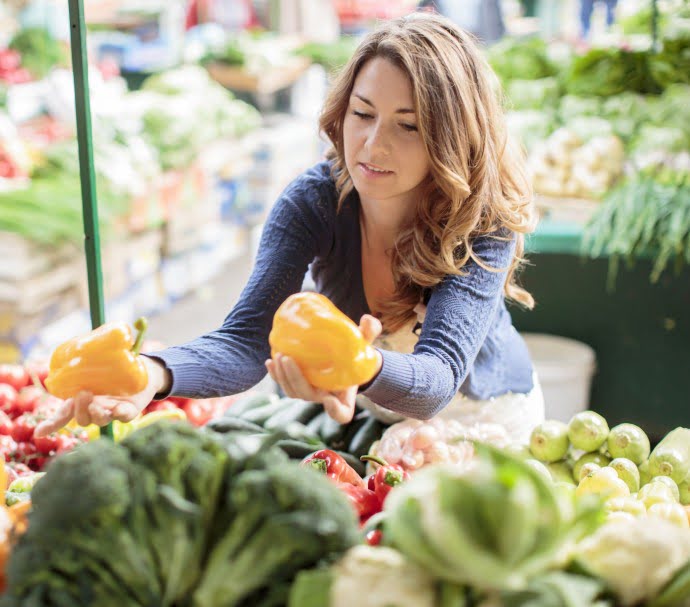




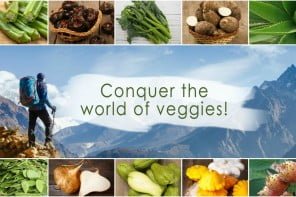
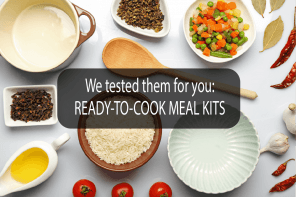


Thanks for sharing the complete list. Very informative. …
You are welcome 🙂
Do you have others tips you want to share with us to help choosing our veggies?
nice job
Hello,
There is actually no additives in frozen vegetables. Thanks to flash freezing, the vegetables keep all their nutriments and can be stored in your freezer for up to 2 years!